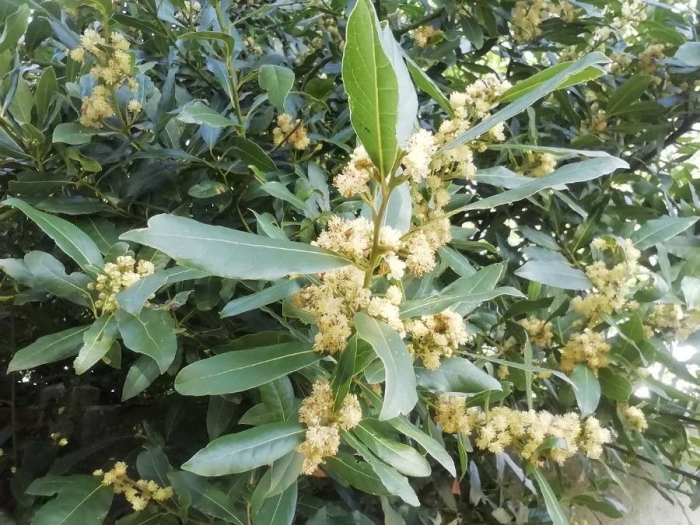Bay Laurel
(Laurus nobilis)
Bay Laurel (Laurus nobilis)
/
/

Daniel Daniel HARNIST
CC BY-SA 4.0

















































































Estimated Native Range
Summary
Bay laurel is cultivated for its aromatic leaves, which are used as the culinary herb bay leaf. It is also popular in ornamental gardens for its formal appearance and is often pruned into topiary shapes or used in hedges. Bay laurel prefers well-drained soils and can tolerate a range of conditions from full sun to part shade. It is relatively drought-tolerant once established but benefits from regular watering during prolonged dry periods. In cultivation, it is important to provide protection from strong winds and to avoid waterlogged soils to prevent root rot.CC BY-SA 4.0
Plant Description
- Plant Type: Tree, Shrub
- Height: 10-30 feet
- Width: 5-20 feet
- Growth Rate: Slow
- Flower Color: Yellow, White
- Flowering Season: Spring
- Leaf Retention: Evergreen
Growth Requirements
- Sun: Full Sun, Part Shade
- Water: Medium
- Drainage: Slow, Medium, Fast
Common Uses
Bee Garden, Bird Garden, Drought Tolerant, Edible*Disclaimer: Easyscape's listed plant edibility is for informational use. Always verify the safety and proper identification of any plant before consumption., Fire Resistant, Fragrant, Hedges, Low Maintenance, Potted Plant, Salt Tolerant, Street Planting
Natural Habitat
Scrub and open woodlands in the Mediterranean region
Other Names
Common Names: Bay Tree, Bay Laurel, Bay-Leaf Laurel, True Laurel, Grecian Laurel, Laurel, Lorbeerbaum, Lorbeerstrauch, Laurier, Loureiro
Scientific Names: , Laurus nobilis, Laurus angusta, Laurus salicifolia, Laurus nobilis var. rotundifolia, Laurus nobilis f. latifolia, Laurus nobilis f. lanceolata, Laurus nobilis var. latifolia, Laurus tenuifolia, Laurus undulata
GBIF Accepted Name: Laurus nobilis L.